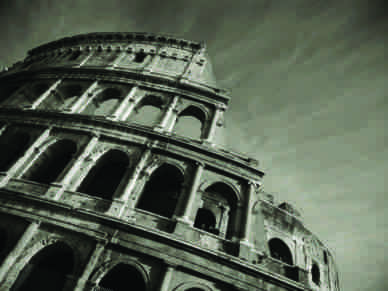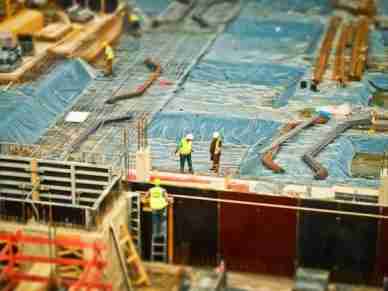The world’s most awe-inspiring edifices
Buildings are often cherished for the activities that unfold within their walls. Yet, some structures are so exquisitely designed that they elicit gasps of wonder at first glance. They inspire awe, inviting us to marvel at the human ability to create such breathtaking beauty. While some of these architectural wonders are centuries, even millennia old, they continue to captivate our imaginations. Others stand as modern masterpieces, showcasing the extraordinary possibilities of contemporary technology and boundless creativity.
Burj Khalifa
The towering monolith in Dubai holds the title of the world’s tallest building. This architectural marvel stands at a staggering height of 2,717 feet. Its design was inspired by the Hymenocallis flower, and its construction was a feat of engineering, incorporating innovative techniques to withstand the harsh desert climate. The Burj Khalifa offers breathtaking views of Dubai from its observation decks, making it a must-visit destination for tourists and architecture enthusiasts alike.
Alhambra
The Alhambra is a breathtaking palace complex located in Granada, Spain. It is a UNESCO World Heritage Site, renowned for its intricate Moorish architecture, stunning gardens, and rich cultural heritage. The palace was built by the Nasrid dynasty between the 13th and 14th centuries, and its name means “the Red Castle” in Arabic. The Alhambra is a testament to the artistic and cultural achievements of the Islamic world, and it remains one of the most popular tourist destinations in Spain.
Angkor Wat
The magnificent temple complex located in Cambodia is the largest religious monument in the world, spanning over 400 acres. Built in the 12th century by King Suryavarman II, Angkor Wat is a testament to the Khmer Empire’s architectural and artistic brilliance. The temple is dedicated to the Hindu god Vishnu and is renowned for its intricate bas-reliefs depicting scenes from Hindu mythology. The central tower of Angkor Wat rises to a height of nearly 200 feet, offering breathtaking views of the surrounding countryside.
Guggenheim Bilbao
The Guggenheim Bilbao is a world-renowned contemporary art museum designed by architect Frank Gehry. Its iconic, curvaceous titanium-clad exterior has made it a landmark. Located in the Basque Country, the museum is home to a vast collection of modern and contemporary art, including works by renowned artists such as Jeff Koons, Richard Serra, and Louise Bourgeois. The Guggenheim Bilbao has played a crucial role in revitalizing the city and has become a major cultural and tourist destination.
The Colosseum
An iconic symbol of ancient Rome, the Flavian Amphitheater as it was officially known, is the largest amphitheater ever built. Its elliptical shape, with two levels of arches supported by columns, was designed to accommodate a massive crowd of spectators. The Colosseum was used for gladiatorial contests, public executions, animal hunts, and historical reenactments. Its construction began under Emperor Vespasian in 70-72 AD and was completed by his son Titus in 80 AD. Despite centuries of wear and tear, the Colosseum remains a testament to the engineering prowess and cultural significance of ancient Rome.
Sydney Opera House
This iconic landmark in Australia is a masterpiece of modern architecture. Its distinctive sail-like shells, designed by Danish architect Jørn Utzon, have become a symbol of the city and the nation. Located on Bennelong Point, a peninsula overlooking Sydney Harbour, the opera house is a UNESCO World Heritage Site. It hosts a variety of performances, including opera, ballet, theater, and concerts, showcasing the rich cultural scene of Sydney.
National Stadium, Beijing
Also known as the Bird’s Nest, it was specially built for the 2008 Summer Olympics. Its unique design, resembling a bird’s nest woven from branches, has made it a symbol of modern China. The stadium is renowned for its architectural beauty, as well as its ability to host a wide range of events, including sports competitions, concerts, and cultural performances. It remains a popular tourist attraction and a testament to China’s growing international presence.
La Pedrera
Also known as Casa Milà, the stunning modernist building designed by Antoni Gaudí is a symbol of Barcelona. Its unique, organic shape resembles a giant quarry, hence its name “La Pedrera,” which means “the quarry.” The building’s façade is adorned with intricate sculptures and mosaics, showcasing Gaudí’s innovative architectural style. The interior is equally impressive, with its open-plan design, skylights, and curved staircases. La Pedrera is a UNESCO World Heritage Site.
Petronas Towers
The pair of iconic skyscrapers located in Kuala Lumpur, Malaysia, stand as a testament to modern engineering and design. These twin towers, once the tallest buildings in the world, are renowned for their distinctive shape, resembling two spires connected by a sky bridge. The towers house offices, retail spaces, and a cultural center, offering a unique blend of business and leisure. Their elegant architecture and strategic location have made them a prominent landmark and a symbol of Malaysia’s economic growth and cultural development.
Empire State Building
Completed in 1931, it held the title of the world’s tallest building for nearly 40 years at 1,454 feet. Its Art Deco architecture is a testament to the era’s grandeur, with its stepped design and gargoyles adding to its imposing presence. The building’s observation decks offer breathtaking panoramic views of the city, making it a must-visit destination for tourists and locals alike.
















Leave a Reply